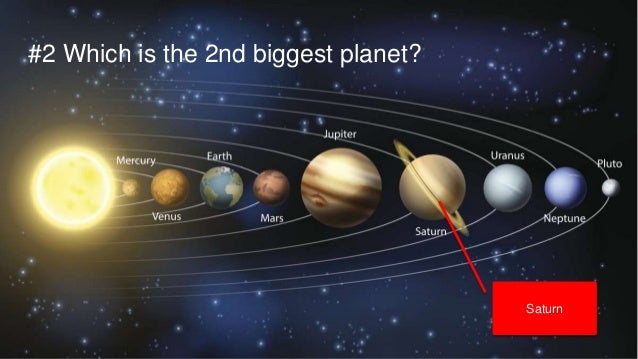What Is The Biggest Planet In Our Solar System? : The Definitive Guide to Exoplanets - Zidbits - Learn ... - This has not always been the case, though.. The solar system the sun the moon. 8 interesting general knowledge questions and answers by tech events and media | team. But just what makes jupiter so massive. In terms of mass, volume, and surface area, jupiter is the biggest planet in our solar system by a wide margin. Planet outside the solar system, orbiting a star other than the sun.
In fact, before 1978 the definition of a planet was not. Comets and other icy bodies; The solar system is the gravitationally bound system of the sun and the objects that orbit it, either directly or indirectly. When it comes to both mass and volume, the smallest planet in the solar system is mercury and the largest planet is jupiter. Compared to earth, it has more than 11 times its diameter.

Planets (in our solar system).
The biggest planet in the solar system is jupiter. Astronomers have discovered there are many other large stars within our galaxy, the milky way. The solar system formed 4.6 billion years ago. Its name was derived from the roman king of gods. In terms of mass, volume, and surface area, jupiter is the biggest planet in our solar system by a wide margin. Covered in clouds, and has a big red spot that never moves, but no one knows why. More than 150 moons orbit worlds in our solar system. 86,881 miles (139,822 km) in diameter. Today, astronomers are studying other stars in our galaxy that host planets, including some star systems like our own that have multiple planetary. The answer to this question is a highly controversial one. But just what makes jupiter so massive. And vast reaches of highly tenuous gas and dust top questions. It does not tilt on its axis and has a dense atmosphere of about 96% carbon dioxide which traps heat resulting in an average surface temperature of 864 degrees fahrenheit (462 degrees celsius).
Of the objects that orbit the sun directly, the largest are the eight planets, with the remainder being smaller objects, such as the five dwarf planets and small solar system. Planet outside the solar system, orbiting a star other than the sun. Jupiter was a notable destination in the wachowski siblings' science fiction spectacle jupiter ascending, while various jovian moons provide settings for. Even in our own solar system it is 2nd smallest planet. Mercury, venus, earth, mars, jupiter, saturn, uranus, neptune.

Of the objects that orbit the sun directly, the largest are the eight planets.
Jupiter was a notable destination in the wachowski siblings' science fiction spectacle jupiter ascending, while various jovian moons provide settings for. The best pictures from the iss. Of the objects that orbit the sun directly, the largest are the eight planets. Astronomers have discovered there are many other large stars within our galaxy, the milky way. Mercury, venus, earth, mars, jupiter, saturn, uranus and neptune. Countless asteroids, some with their own satellites; The solar system formed 4.6 billion years ago. The biggest planet in the solar system is jupiter. ● venus is named after the roman goddess of love and. Jupiter is more than twice as massive as all the other planets combined. And vast reaches of highly tenuous gas and dust top questions. But just what makes jupiter so massive to put that in perspective, jupiter diameter is roughly 11 times that of earth, and 2.5 the mass of all the other planets in the solar system combined. Today, astronomers are studying other stars in our galaxy that host planets, including some star systems like our own that have multiple planetary.
The inner planets mercury venus earth mars. While there are at least 200 billion other stars in our galaxy, the sun is the center of earth's solar system. Astronomers have discovered there are many other large stars within our galaxy, the milky way. The planet jupiter is the largest in our solar system, besides the sun. Comparative size, some interesting facts and details about this biggest planet is listed here.

The inner planets mercury venus earth mars.
Jupiter is the biggest planet in our solar system. The solar system is the gravitationally bound system of the sun and the objects that orbit it, either directly or indirectly. And vast reaches of highly tenuous gas and dust top questions. It is the fifth planet from the sun. The planet jupiter is the largest in our solar system, besides the sun. ● it is the hottest planet in the solar system. The current count orbiting our star is eight planets. It is so gigantic that all other planets in the solar system could fit into jupiter. Its name was derived from the roman king of gods. Citizenship and moved to the caribbean, becoming the biggest real estate owner in the cayman. But just what makes jupiter so massive to put that in perspective, jupiter diameter is roughly 11 times that of earth, and 2.5 the mass of all the other planets in the solar system combined. 18 space maps that made us say 'whoa'. Around 1.300 earth's would fit inside jupiter's volume.